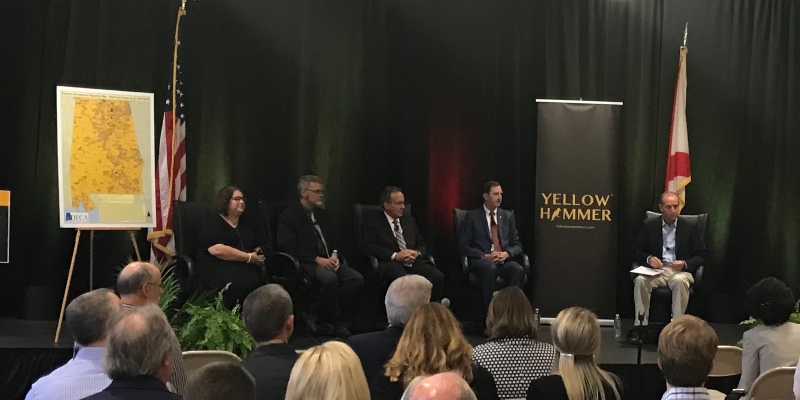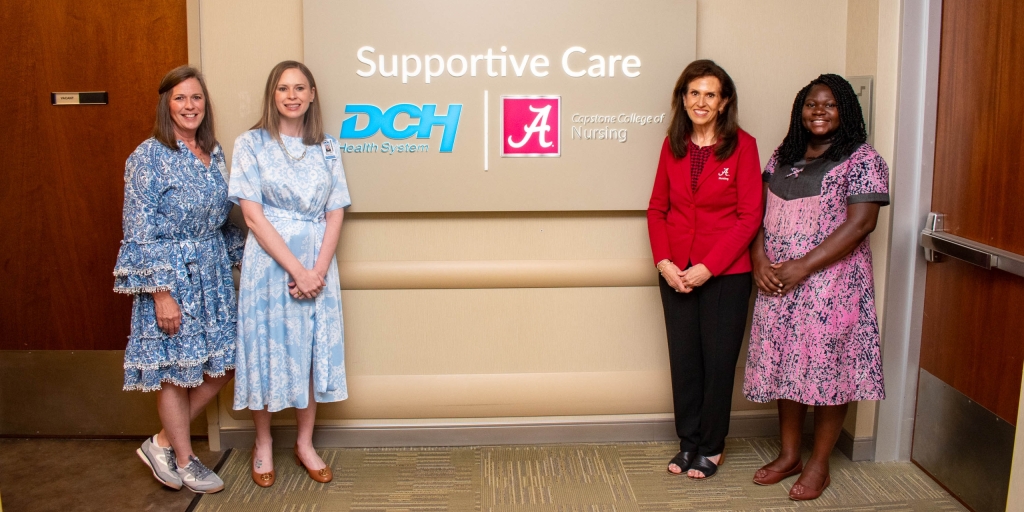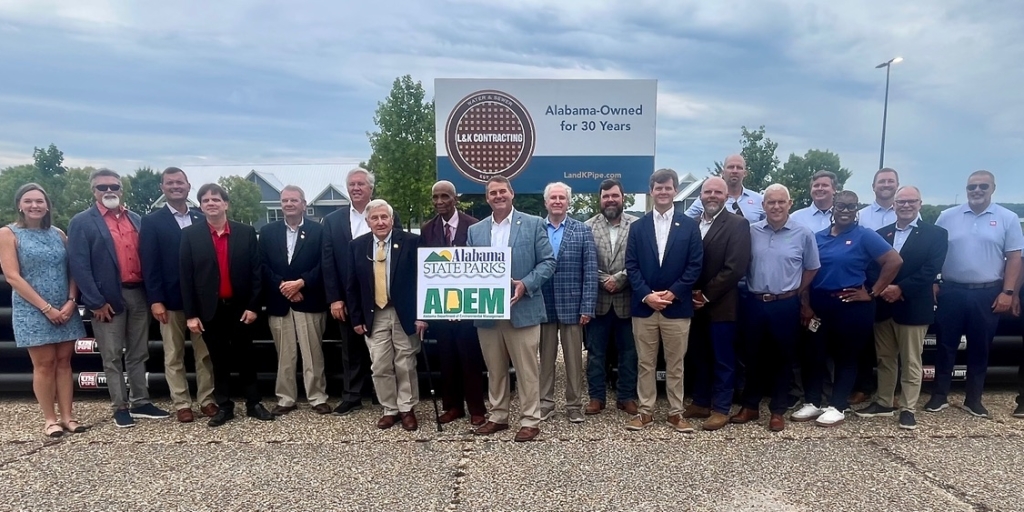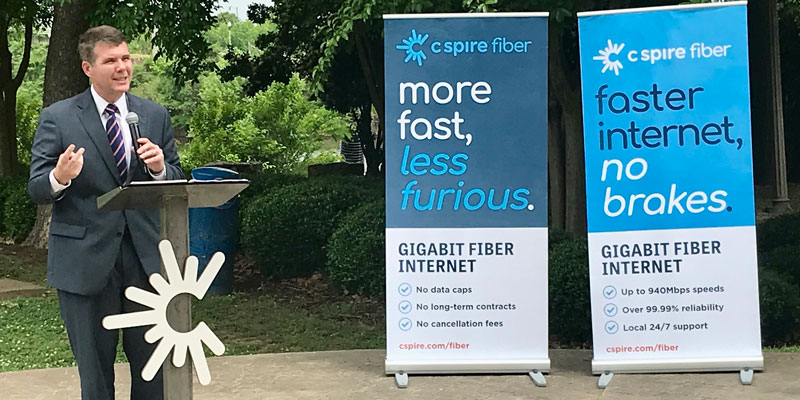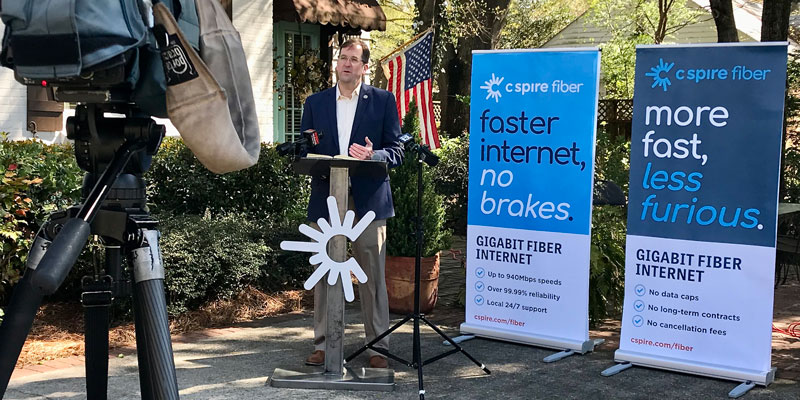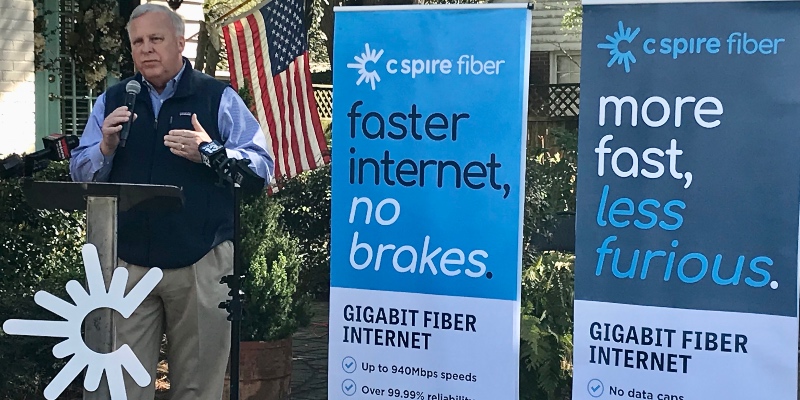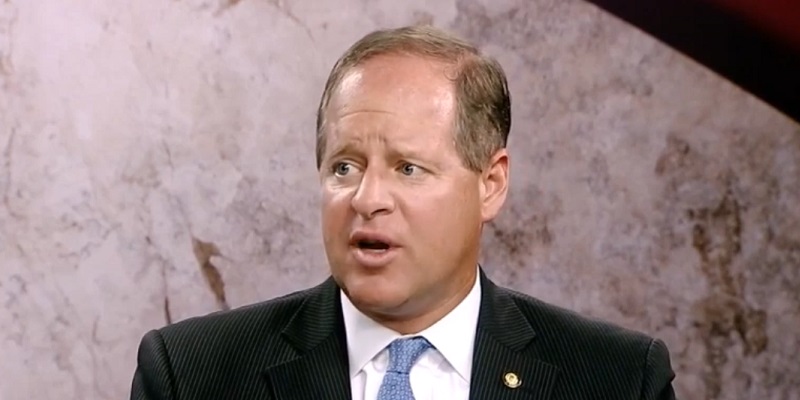GUNTERSVILLE — During Yellowhammer News’ “Connecting Alabama’s Rural Communities” News Shapers forum regarding broadband expansion on Thursday, the panel of four experts from industry and government dove deep into the weeds on the important issue.
State Sen. Clay Scofield (R-Arab), Farmers Telecommunications Cooperative’s Fred Johnson, Central Alabama Electric Cooperative’s Tom Stackhouse and Maureen Neighbors of the Alabama Department of Economic and Community Affairs (ADECA) were asked questions from moderator Tim Howe of Yellowhammer Multimedia over a 45-minute span at Guntersville Town Hall.
Yellowhammer’s News Shapers series continued this week in Guntersville as we discussed rural broadband expansion with regional thought leaders. Great crowd, great panel, great night.#YHNNewsShapers pic.twitter.com/Pae0zBEBOF
— Yellowhammer News (@yhn) July 22, 2019
Approximately a third of the way through the forum, Howe turned the conversation to broadband mapping, which attempts to pinpoint which areas have access and which do not.
This practice is especially important for purposes of the Alabama Broadband Accessibility Fund, which provides state grants for service providers to supply high-speed internet services in unincorporated areas or communities with 25,000 people or less.
Under the law, eligibility is also dependent on whether respective areas are already “served” (have broadband coverage that meets certain a threshold) or not. Hence, accurate mapping is crucial to ensure grants are going to the right places.
As ADECA is responsible for administering the grants, Howe asked Neighbors what role the department plays in the mapping process.
With the latest update to the state of Alabama’s broadband map over her shoulder, Neighbors explained that mapping is still “a tricky issue.” She also outlined how ADECA will attempt to address the problem.
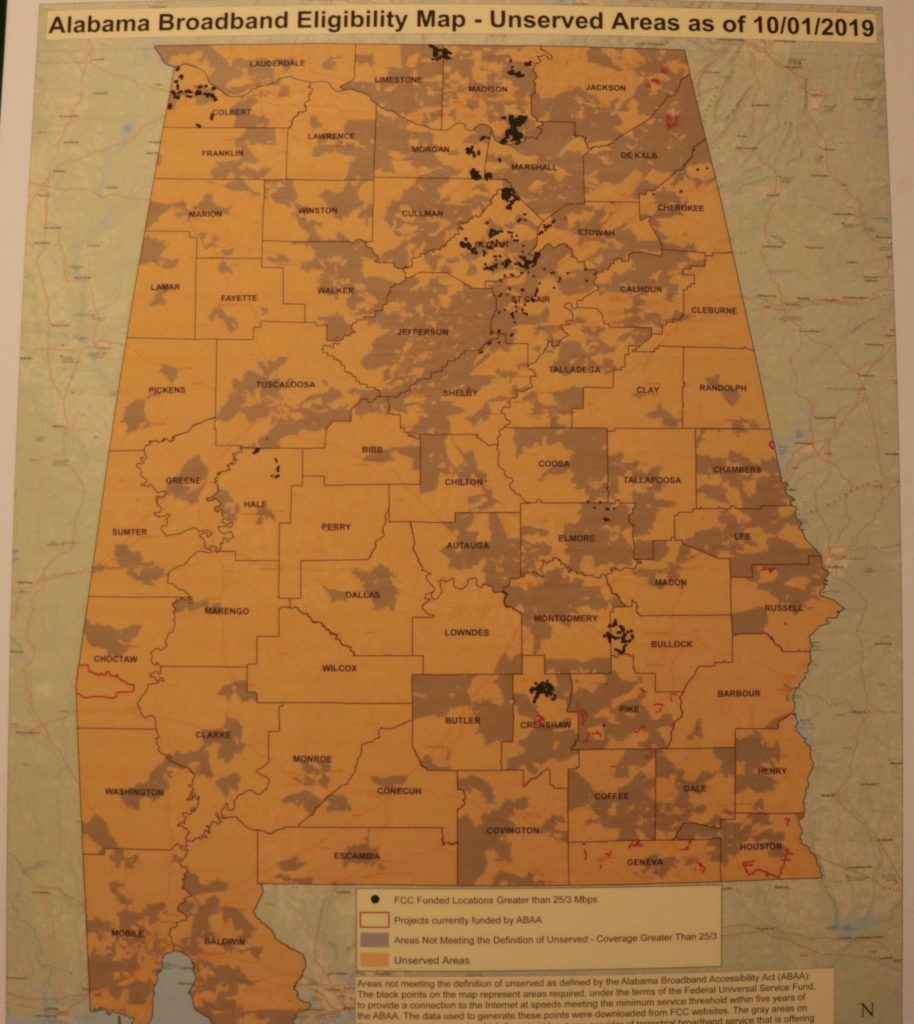
“We are getting ready to issue an RFP,” Neighbors advised. “It will be, I believe, it will be posted on Monday for broadband consulting that will include planning and mapping for the state of Alabama.”
You can view the RFP, which was issued first thing on Monday, here.
Continuing her thoughts on Thursday, Neighbors told the crowd that current mapping is essentially based off of providers’ self-reporting alone.
“No one’s required to tell us anything and we can’t make them tell us,” she lamented.
“So, the map is only as accurate as the information that we receive,” Neighbors continued to explain. “The maps that we have now are based on FCC data — that’s a self-reporting tool that providers use. The FCC and the providers all know it’s not terribly accurate. It’s really all we have right now to tell us where there are clusters of service, but it doesn’t do a good job of telling us where there isn’t service. So, that’s something we hope to be able to address with a consultant, whoever it is. We’ll be looking for folks who have worked in other states and have helped them with their mapping weaknesses. Because it is a difficult issue, and it’s hard to get the data — and it’s hard to have something that’s accurate. And without the data, it’s hard to target the funds to those areas that are in most need of broadband service.”
Following up, Johnson did not mince words on mapping from a provider perspective. He has had extensive experience with the issue on the state level and nationally, with experts across the United States widely respecting his industry leadership.
Johnson told the crowd in Guntersville that mapping is “absolutely critical” to broadband providers.
“And it’s an absolute disaster,” he emphasized, commenting on the current state of mapping.
Howe asked Johnson how that situation is to improve.
“Well, pray would be a good place to start,” Johnson joked.
“The challenge with the mapping process is that nationwide under the FCC auspices, all providers are supposed to provide their service characteristics across the geography of the nation,” he said.
Johnson then explained that the “challenge process,” or how alleged errors in a provider’s self-reporting are adjudicated, is weak, meaning errors often go uncorrected.
“And in defense of some of the reporting, you have to understand that in some cases, a local telephone company, actually in many cases, may have changed hands 10 or 15 times since the map of its service territory was perfected,” he outlined. “So, the current owner has no data to support them, no way to really accurately enter things.”
He credited FCC Chairman Ajit Pai for a currently open notice for proposed federal rule-making that Johnson believes will be a step in the right direction. However, Johnson said that the federal government still has a long way to go, which makes the current ADECA effort that much more important.
“But until we get down to a point where all providers are required to essentially tell you the longitudinal and latitudinal coordinates of every location they serve and the top of service provided there, and that is subject to a reasonable challenge process so that if somebody is playing fast and loose with the rules — which will happen, has and will continue to happen — then what Maureen (Neighbors) and what ADECA is doing to address the issue on a more statewide level is absolutely essential,” he advised. “Because this legislation (by Scofield) was well-written to make sure that it (the funding) went to where it needed to go.”
Sean Ross is a staff writer for Yellowhammer News. You can follow him on Twitter @sean_yhn




